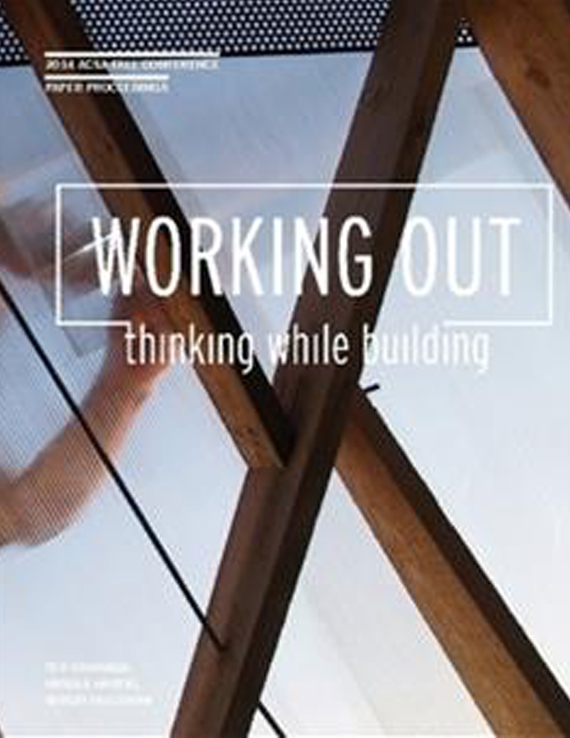Author(s): Nik Nikolov
The Imaginarium is a small, kid-size building made in response to the 2013 Annual Playhouse Design Competition organized by the regional chapter of the American Institute of Architects. The competition promoted design and architecture in the region and the entries were open to the public to use with the start of the 150-old traditional Christmas festival. In late December the entries were auctioned to raise funds for the Pediatric Cancer Foundation of the Lehigh Valley. The playhouse was designed and built in less than 3 months by architecture and product design faculty and undergraduate Architecture/Engineering dual-major students. The collaborative team was interested in expanding the idea of play beyond something that is either learnt or unlearnt. The resulting design is a mysterious faceted crystal-like house which resisted the common strategy applied to children-bound creations – to create small versions of big things (princess castle), or big versions of small things (mushroom house). Ideas of public/private space were of particular interest – how privacy is cultivated, inhibitions and self-awareness are imposed and assimilated. Can architecture simultaneously provide prospect and refuge? While asking these questions the team drew inspiration for the initial designs from a variety of cinematic and literary sources. The form of the final design was generated in 3d computer modeling software which allowed for quick modifications in the design, iterative simulations, and prototyping. Components were then moved to various software applications so they could be laser-cut or CNC-routed by local commercial fabricators. All the final assembly was done by hand. Materials used were 3/4″ plywood, 1/4″ two-way mirrored acrylic and laser-cut 18ga steel joints. The effect produced by the two-way mirrored acrylic is such that during the day you can see out, but no one can see inside. At night a photo sensor turns on a light inside and the effect is inverted – the house is completely transparent to the outside observer and completely mirrored to the inhabitant. The playhouse turns into a place where a kid can see everyone but no one can see them, only to have that same idea flip directions at night. New games and ways to play with this effect are easy to imagine. The designers were surprised to find just how interactive the completed playhouse really was. As the resulting reflective-transparent effect started to materialize during construction, it became a psychological game of perception. Standing inside at night the user has no idea if anyone is looking at them from the outside and yet they are immersed an infinite space of reflections. The project revealed the great potential of student-teacher collaboration. Long after the project was ‘done’ the students continued coming by to see if they can do more.
Volume Editors
Sergio Palleroni, Ted Cavanagh & Ursula Hartig
ISBN
978-0-935502-94-7

 Study Architecture
Study Architecture  ProPEL
ProPEL 
